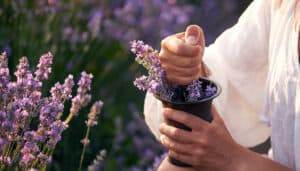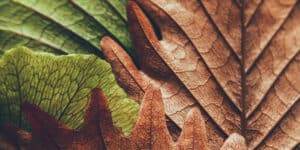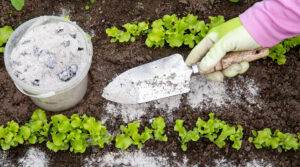Hawai’i is well known for its extreme biodiversity. Almost any plant can thrive in a tropical oasis, so the Aloha State has naturally become home to an incredible number of species, both native and non-native. While many plants are now invasive and causing issues in the ecosystems of Hawai’i, the native Hawaiian plants are celebrated and revered for their visual, medicinal, and culinary offerings.
Native Hawaiian plants fall into two categories: endemic or indigenous. Endemic plants are found only in Hawai’i, while indigenous plants are found in additional geographic areas.
The following is a non-exhaustive list of native Hawaiian plants that are or were primarily used for their medicinal, diet-sustaining, or aesthetic properties. Of course, there is plenty of overlap between these, so several of the plants may be placed in any of the three categories.
The medicinal information in this article is that of tradition and word of mouth and has not been evaluated by the FDA; additional research should be completed before consuming any of the plants, fruits, or flowers listed below.
Medicinal Hawaiian Plants
Hawaiians have a rather admirable reputation for using plants (and every part of them!!) to treat and cure a variety of ailments. The plants found in this section have traditional medicinal applications, ranging from settling indigestion to suppressing symptoms of diabetes. Some of these applications are still in practice today, while others are associated with old Hawaiian traditions.
‘Ilima
Other Common Name(s): Yellow ‘Ilima, Golden Mallow
Scientific Name: Sidafallax
Hawai’i Native Status: Indigenous
Description: Significant intraspecific variation. Alternate, serrated leaves ranging from elongate to nearly round. Leaves are bright green on top and densely hairy underneath. Small, yellow to orange, clustered flowers.
Medicinal Uses: Early Hawaiians chewed the flower buds to alleviate thirst and ease pains associated with birthing. Flowers and root bark combined to treat asthma.
Alaʻala Wai Nui
Other Common Name(s): Arid-land Peperomia
Scientific Name: Peperomiablanda
Hawai’i Native Status: Indigenous
Description: Non-showy white flowers. Leaves are bright to dark green on top and reddish-purple underneath with purple streaks.
Medicinal Uses: Juice from plant is used to treat a variety of ailments, including asthma, appendicitis, and inner ear disorders. Leaf buds combined with a variety of flowers, leaves, barks, stems, and fruits to treat newborns, general infections, such as a sore throat, and women’s “weakness and debilitation” (Old Hawai’i).
Koʻokoʻolau, Koko’olau
Other Common Name(s): Mauna Loa Beggartick
Scientific Name: Bidens menziesii
Hawai’i Native Status: Endemic
Description: Small, yellow flowers, each with five lobed petals.
Medicinal Uses: Various parts of shrub used to make a tonic that regulates body’s digestive system.
Pāʻū o Hiʻiaka, The Skirt of Hi‘iaka
Other Common Name(s): Oval-leaf Clustervine
Scientific Name: Jacquemontiaovalifoliassp.sandwicensis
Hawai’i Native Status: Endemic
Description: Herbaceous, densely-clumped vine that can establish in exposed, rocky or sandy substrates. Small, white or pale blue flowers composed of five partially or fully fused petals that form a tube. Thick, fleshy leaves.
Medicinal Uses: Leaves used for catharsis and to treat thrush in babies.
Additional Information: Stories tell that Pele, the goddess of volcanoes, left her sister, Hi’iaka, asleep on a beach while she went fishing. When Pele returned, she found the oval-leaf clustervine covering Hi’iaka to protect her from the sun.
‘Aiakanēnē, Kūkaenēnē, Punēnē
Other Common Name(s): Black-fruited Coprosma, Nene Berry, Nene Bush
Scientific Name: Coprosmaernodeoides
Hawai’i Native Status: Endemic
Description: Tubular flowers with four, curling lobes. Leaves small, opposite, densely clustered, and bright green. Colonizes lava flows and cinder fields. Grows in open, upland areas.
Medicinal Uses: Berries are edible when ripe, but lack flavor; therefore, commonly used as a laxative.
Additional Information: ‘Aiakanēnē berries are a staple for the endangered Hawaiian goose, the Nene. This is where its names come from.
Honorable (But Non-native) Mention:
Noni
Other Common Name(s): Indian Mulberry, Large-leaved Morinda
Scientific Name: Morindacitrifolia
Hawai’i Native Status: Non-native
Description: Shrub or small tree with large, dark green, shiny leaves. Fruits pale yellowish-green, irregularly shaped, and composed of warty “cells.”
Medicinal Uses: Most applicable and diverse range of medicinal uses. Consumed orally for issues regarding high blood pressure, heart problems, diabetes, and weakened immune systems. Applied topically for epidermal issues.
As Food: Described as having a fetid odor and tasting like blue cheese. Often eaten in times of famine, but some report to eat voluntarily, especially after fermenting.
Additional Information: Although it does not adhere to the standards for “native” status, noni was brought over by the first Polynesian colonizers, and is known as one of the “Canoe Plants.”
Edible Hawaiian Plants Used Primarily for Food
While there are certainly traditional medicinal uses for the following plants, this section focuses primarily on the use of plants as a source of food. While the descriptions found here alone are not enough to safely identify and consume a plant, they are intended to serve as an introduction to gathering a knowledge base of native Hawaiian plants that have traditionally played a role in the Hawaiian diet.
‘Ama’uma’u Fern, ‘Ama’uma’u, ‘Ama’u
Other Common Name(s): Rasp Ferns
Scientific Name: Sadleriacyatheoides
Hawai’i Native Status: Endemic
Description: May appear as large, low-growing fern or as tree with “trunk.” Skirt of silvery dead leaves. Fronds contain oval-shaped pinnae that are shiny green on top and greenish-white below when mature. New leaves are bright reddish-orange. Grows in moist forests and upland lava flows.
Preparation: Young leaves, and starchy trunk core can be eaten after being cooked.
Additional Information: Traditional Hawaiian famine food.
Hala, Pu Hala
Other Common Name(s): Screw Pine, Tahitian Screwpine, Textile SCrewpine, Thatch Screwpine, Pandanus, Pandan, Tourist Pineapple
Scientific Name: Pandanustectorius
Hawai’i Native Status: Indigenous
Descriptions: Male flowers are densely clustered and surrounded by large, cream bracts. Female flowers are large and pineapple-like. Dark green, sword-shaped, spirally-clustered leaves. Characteristic stilt or prop roots at base of trunk.
Preparation: Fruits are edible raw. Seeds and fleshy, fibrous bases of ripe fruit segments, often called phalanges or keys, are edible raw or cooked.
Additional Information: Male flowers are fragrant and attract bees. Fruits are often mistaken for pineapples by tourists.
Ornamental Hawaiian Flowering Plants
Although Hawai’i is known for its strikingly colorful, flamboyant flowers, many of the commonly recognized ones are not native to the islands. This section is intended to introduce a few of Hawai’i’s true natives, in addition to conveying their historical significance. Many of these flowers have applicable medicinal and practical uses, but here, they are appreciated as unique, aesthetically pleasing blossoms.
Koki’o ‘Ula
Other Common Name(s): Hibiscus (general)
Scientific Name: Hibiscuskokiossp.saintjohnianus
Hawai’i Native Status: Endemic
Flower Description: Orange, red-orange, or yellow flower petals 4.5-7 cm long. Stamens emerge from base of petals in single column and spread into individual yellow stamens at top. Five hairy stigma lobes resembling the shape of a pentagram at tip of stamen column.
Uses: Dye from bark used as invisibility aid, making nets and lines difficult for fishes to see underwater. Juice from leaves and buds acts as gentle laxative. Flowers act as astringent. Roots used to soothe digestive and respiratory tracts.
Ma’o Hau Hele, Pua Aloalo
Other Common Name(s): Brackenridge’s Rosemallow, Native Yellow Hibiscus
Scientific Name: Hibiscus brackenridgei
Hawai’i Native Status: Endemic
Flower Description: Official state flower of Hawai’i. Yellow with maroon center. 10-15.5 cm in diameter. Yellow stamen column. Ephemeral blossoms only last morning until nightfall.
Uses: Landscaping.
‘Ohi’a Lehua, Ohia
Other Common Name(s): (none)
Scientific Name: Metrosiderospolymorpha
Hawai’i Native Status: Endemic
Flower Description: Pom-pom like. Typically red, but may be orange, yellow, salmon, or pink. Composed of numerous stamens 1-3 cm long.
Uses: The flower is used to ease childbirth. Leaf bud tea is used as tonic and to treat colds.
Additional Information: Flowers are associated with symbol for love. Flowers are important food source for endemic Hawaiian honeycreepers (birds). Most abundant and widespread tree on the main Hawaiian Islands. One of the first trees to colonize lava flows.
Beach Naupaka, Naupaka Kahakai
Other Common Name(s): Half Flower
Scientific Name: Scaevola taccada
Hawai’i Native Status: Indigenous
Flower Description: Five white or cream, purple-streaked, spoon-shaped petals fanning out only on bottom half of flower. Petals are 8-12 mm long. Fragrant.
Uses: Leis lore.
Additional Information: Will germinate even after floating in the ocean for several months to a year. Legends say half flower represents lovers that have been torn apart. In one iteration, Princess Naupaka is forbidden to marry her true love. When they separate, she pulls a flower from her lei and tears it in half, symbolizing their parting of ways.
Pua Kala, Naule
Other Common Name(s): Hawaiian Poppy, Hawaiian Prickly Poppy, Smooth Pricklypoppy
Scientific Name: Argemoneglauca
Hawai’i Native Status: Endemic
Flower Description: At least 7.5 cm across with six broad, crinkled, white petals. Yellow-orange stamens and dark purple, lobed stigma. Ephemeral blossoms lasting only one day.
Uses: Poisonous. Seeds and stalk sap are used as narcotic and analgesic for toothaches, neuralgia, and ulcers.








